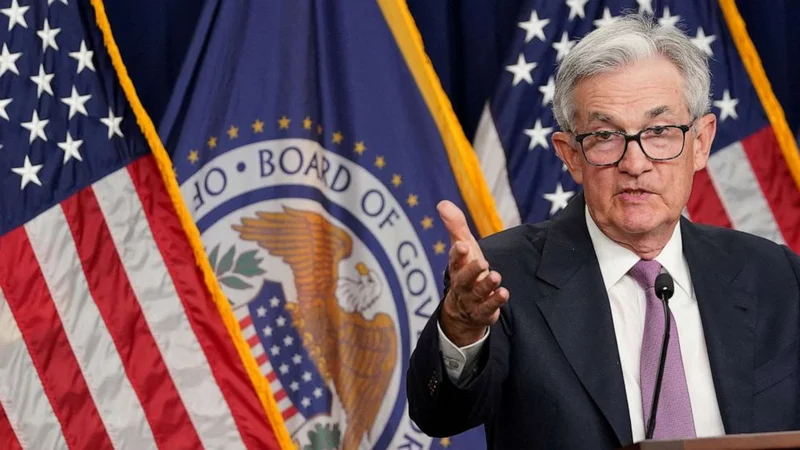Jerome Powell's Pivot: Deconstructing the Fed's Rate Cut Signal
Powell's Pivot: Parsing the Signal from the Noise in the Fed's End Game
Federal Reserve Chair Jerome Powell’s speech in Philadelphia this week was a masterclass in central bank signaling. The market heard exactly what it wanted to hear: Fed's Powell suggests tightening program could end soon, opens door to rate cuts. Equity futures ticked up, and bond yields adjusted accordingly, pricing in at least two more rate cuts in 2025 with a conviction that borders on certainty.
But certainty is a luxury in this environment. While the headlines focused on the dovish language regarding interest rates, the more significant signal was buried in the technical discussion of the Fed’s balance sheet. Powell’s suggestion that the end of "quantitative tightening," or QT, is on the horizon—potentially just "in coming months"—marks a pivotal moment. The great monetary experiment that began in the chaos of 2020 is entering its final, and perhaps most unpredictable, phase. The market is celebrating the potential for cheaper money, but the real question is whether the Fed can actually land this plane with its instruments flickering.
The Rate Cut Mirage
Let’s first address the market’s primary obsession: interest rates. Powell noted that the labor market has "considerably" softened, bringing the dual risks to employment and inflation "closer to being in balance." This is the requisite language to justify the quarter-point cut we saw in September and to pave the way for more. The market, in its infinite wisdom, has already decided this means two more cuts are a done deal.
I’ve tracked hundreds of these FOMC statements and press conferences, and this is the part of the narrative that I find genuinely puzzling. Powell himself admitted that the recent government shutdown has hampered the flow of critical economic data. The very dashboards the Fed relies on to gauge the health of the labor market and inflation are partially dark. How can policymakers have a clear view that the outlook hasn't "significantly changed" when their access to the underlying data has been compromised?
This isn't a minor discrepancy; it's a methodological red flag. It suggests the Fed is navigating more by feel and by prior forecasts than by fresh, incoming information. While the "softened" labor market narrative is plausible, making high-stakes policy decisions on incomplete data introduces a significant margin for error. The market is pricing in a smooth, data-driven glide path to lower rates, but the reality appears to be closer to the Fed steering through fog, hoping the coastline is where the old maps said it would be. Is this confidence, or is it a calculated gamble that it's better to signal accommodation now than to risk a market panic by admitting uncertainty?

The Trillion-Dollar Definition Problem
The more critical story, however, lies with the balance sheet. This behemoth, which swelled to nearly $9 trillion during the pandemic, has been quietly shrinking since mid-2022. It’s a process akin to a supertanker slowly bleeding off its cargo. The Fed has been letting bonds mature without reinvesting the proceeds, pulling liquidity out of the financial system. The balance sheet has shrunk by nearly $3 trillion—or, to be more precise, about $2.8 trillion from its peak.
Powell’s signal is that this process is nearing its end. The goal, he stated, is to reach a state of "ample" bank reserves. This is where the objective, data-driven world of finance collides with subjective interpretation. "Ample" is not a number. It is a concept. It represents the point at which the banking system has enough liquidity to operate smoothly without the Fed’s constant intervention. The problem is, no one knows exactly what that level is. The last time the Fed misjudged this (back in the fall of 2019, when it tightened too far), it caused a dramatic and destabilizing spike in overnight lending rates, forcing an emergency reversal.
The Fed is adamant it won't return to its pre-COVID balance sheet size of roughly $4 trillion. The new floor will be substantially higher. But is it $5 trillion? $5.5 trillion? The difference isn't academic; it represents hundreds of billions of dollars in liquidity that will either remain in or be drained from the financial system. Powell’s speech indicates we are approaching the target, but the deliberate vagueness of the target itself should give investors pause. The Fed is essentially saying it will keep draining the pool until someone starts gasping for air, at which point it will turn the taps back on.
This entire mechanical process is being complicated by a political sideshow. Calls from figures like Senator Ted Cruz to eliminate the interest the Fed pays on bank reserves—a tool Powell rightly defended as essential for "control over rates"—miss the point entirely. The debate over interest on reserves is a distraction from the far more consequential operational challenge of finding the new equilibrium for the balance sheet. While politicians score points, the technocrats at the Fed are trying to solve a multi-trillion-dollar engineering problem without a clear blueprint.
The Fed Is Flying Blind, And So Is The Market
My analysis suggests the market is celebrating a destination it can't see on a map drawn by a pilot who is missing key instrument readings. The focus on one or two more rate cuts is shortsighted. The real story is the structural shift in the Fed's balance sheet policy and the immense operational uncertainty that comes with it. Powell is projecting confidence, as he must, but the underlying conditions—the data blackout and the undefined target for bank reserves—scream caution. The Fed is signaling an end to tightening, but it’s an end defined by feel, not by clear metrics. For a market built on pricing risk, that should be the most significant signal of all.
Tags: fed chair jerome powell
ChainOpera AI: Understanding the Breakthrough and Its Vision for the Future
Next PostThe JPMorgan Earnings Charade: Why a 'Win' Still Looks Like a Loss
Related Articles
